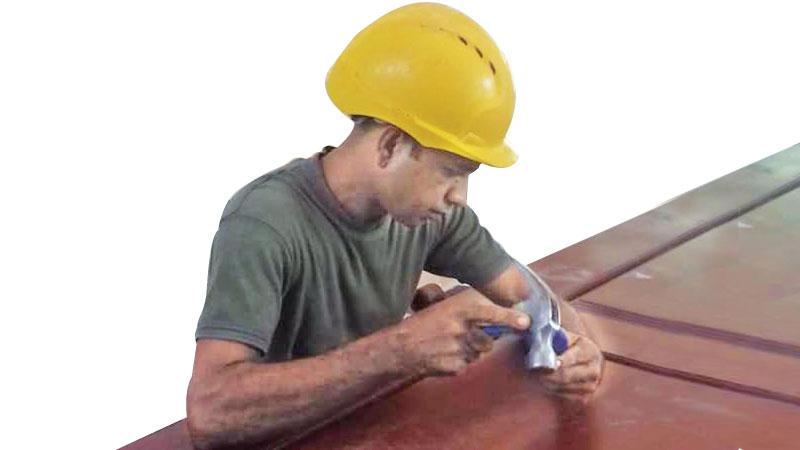
“Though I walk through the valley of the shadow of death, I will fear no evil”- Psalm 23. 4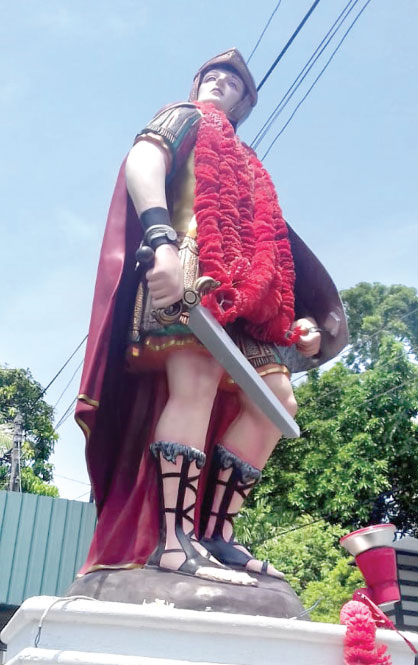
Negombo is referred to as Little Rome by many, for she has a large Catholic community. Her landscape is dotted with many beautiful churches and pristine beach fronts. The quaint village of Katuwapitiya was in severe shock as the St. Sebastian Church was one of the three churches targeted on Easter Sunday. It is believed to have suffered the largest number of deaths from this most cowardly attack. As I made my way towards the church white flags were visible. From the turn off point one could see a statue of St. Sebastian, the patron saint of soldiers. A few feet away four Air Force personnel were on guard. The road leading to the church was quiet. As we neared the main gate a shocking reminder of death confronted us- colour photographs of the innocent souls who perished in that terrible explosion, hanging on the outer wall. The photos of little children smiling in innocence, never realising that they would die. It was a most heartbreaking sight and moved many devotees to tears. Flowers now faded in the heat were strewn in the garden. The main gate was guarded.
The beauty of the church was clothed in a deafening silence. I made my way to the office of the parish priest, along with Major OMR Priyathna- the project engineer. At the entrance there were a few Catholics waiting to meet the priest, and on understanding our task kindly let us in. Rev. Fr. Srilal Fonseka is an amiable priest, himself recovering from the terrible sight of watching his congregation die, as he was conducting mass on that Easter morning. He said “I don’t have words to express my grief. I witnessed that death of my own people. I have known these dear people for almost five years. The day after the incident 70 priests came from many churches and we had a vigil with prayer. The next day almost 150 nuns visited the surrounding neighbourhood speaking to people, comforting them. I thank them for their solidarity. As you know there are parents who have lost children, and innocent kids who have lost their mother or father. Brothers and sisters mourn for other lost siblings.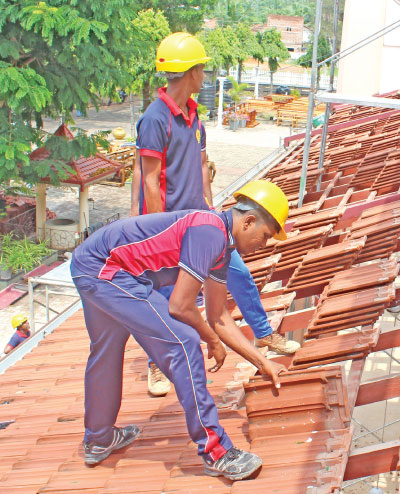
We are doing our best to offer these suffereing people counselling and hope assisted by Fr. Claude Nonis. Life must go on amidst this very challenging enviornment. We appreciate the efforts of the Army to rebuild this House of God”.
The entire church is full of scaffolding- on the outside and inside. On 30th April the soldiers along with some men from the Negombo Municipal Council undertook the task of cleaning the church. Large stains of human blood had to be scrubbed away. High pressure water jets were used to remove the traces of death and mayhem. I gazed upon the walls; it was like a building from a World War 2 movie- the walls were riddled with thousands of holes.
Project Engineer Major Priyantha added “We engaged in this task on the direction of Army Commander, Lt. General Mahesh Senanayake, under the supervision of Brigadiers Ganegoda and Gunasekera. All the 75 soldiers volunteering for this massive mission are from the 6th Engineer Service Regiment. We have moved from Colombo and are temporarily staying at the Army camp in Katunayake. We travel daily to the church”.
We walked towards the empty main altar, where a purple cloth remains. The project officer Captain Lakmal Koddituwakku is busy supervising some soldiers. The violent blast had rocked the sanctuary and an assessment had to be done to ensure its structural safety. One of the first tasks was to remove danger laden segments of the high roof.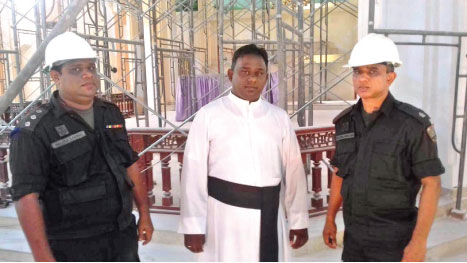
The roof was replaced and plans are drawn to build a new ceiling below the layer of tiles. The young soldiers, a majority of them Buddhist have come forward for this herculean task which has to be completed by June 30th June. Rev. Father showed us the broken windows- 44 stained glass arch windows were shattered.
The church cannot find the same type of elegant glass and has had to settle for an alternative. The troops begin their day at 5am and reach the church by 6am. The 75 men include masons, carpenters, electricians, plumbers, painters and aluminum fabricators. The men were busy at work, but made minimum noise. On the left side of the main altar was another ghostly reminder of death- a circular wall clock. Time had stood still from the second of the explosion, from vibrations originating via shock waves.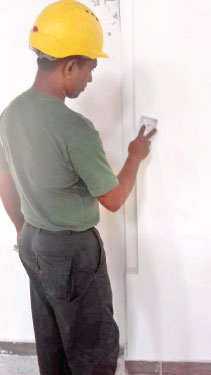
The pious congregation has decided to keep a portion of the wall, riddled with holes as a reminder. Plans are being drawn to have a monument in the garden to remember those who died. The sincere effort of the young soldiers is being appreciated by the people of Negombo.
Advice for the ongoing task has been offered by the State Engineering Corporation and architect Upul Dalpadado. As I walked outside there was a small crowd of people near the grotto. An old mother, crowned with grey hair was weeping for a dead family member.
Her hopeless gaze rendered me speechless for a minute. The people need time to heal. We will boldly rise from the ashes to victory in Christ.
